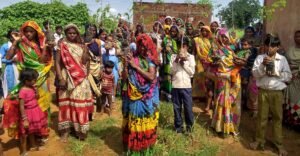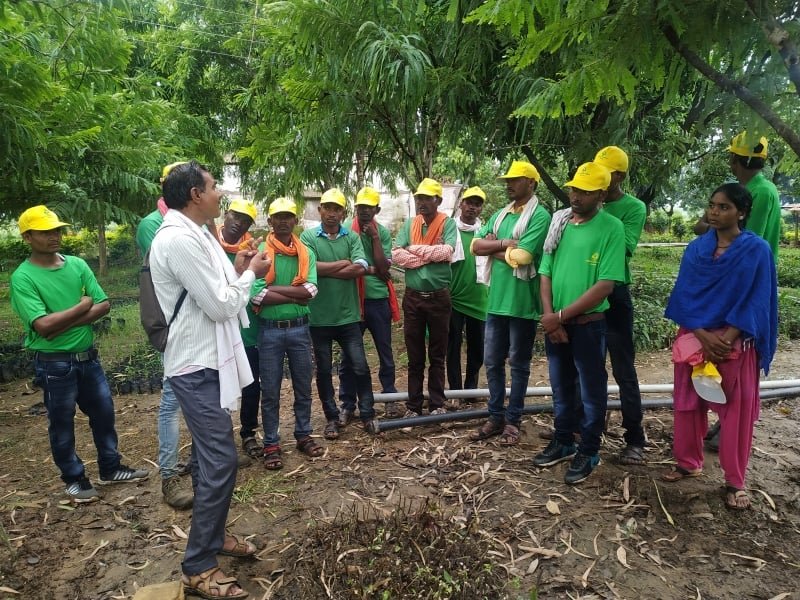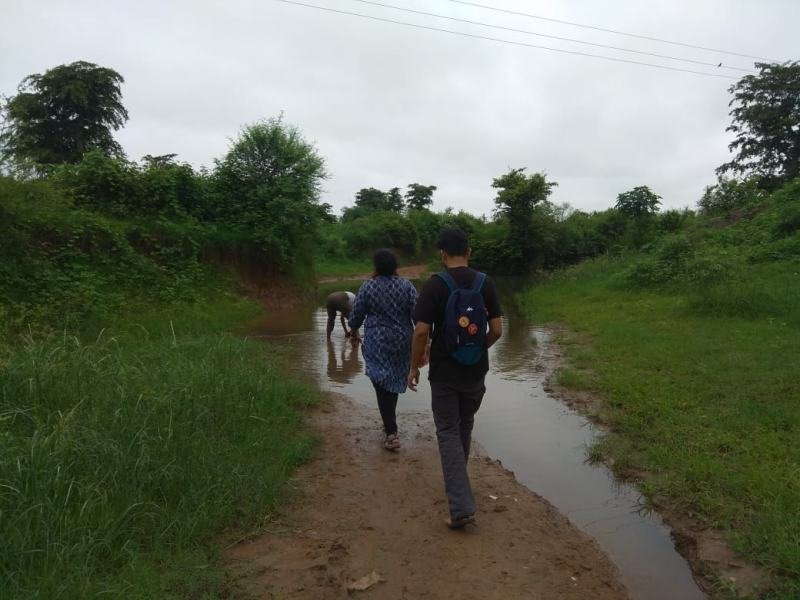In April 2018, with 10 years under the belt of the India Fellow Program, some of the alumni began discussions towards the future of the vision of the fellowship. The fellowship believed in the power of working alongside grassroots communities, and spending time to understand the complexities on the ground, in order to design contextual solutions. With this in mind, a small team of alumni decided that it was time to test this theory. To choose an area within the country where the penetration of civil society was limited, and where indicators of development were poor, and to spend time looking closely at the scenario on ground, till the time when it becomes clearer what the course of future action should be. And with this in mind, the first steps of the project were taken in early 2018.
It began with some in depth secondary research of the development scenario across the country, by consulting human development indicators and other resources keeping development interventions in focus. After an initial assessment, three locations were narrowed in for the proposed immersion project. First was Kalahandi in Odisha, second was southern Chhattisgarh and the third was the Bundelkhand region. All three were seen as potential spaces for the initiative.
After further deliberation, we chose the region of Bundelkhand. With multiple droughts, a history of underdevelopment even after getting the attention of the government, and low indicators of health and education, Bundelkhand was chosen. And within Bundelkhand, the District of Panna was chosen. The following criteria was applied when selecting from the 13 districts of Bundelkhand (Madhya Pradesh and Uttar Pradesh):
- Literacy Rate.
- Number of people living below poverty line.
- Penetration of civil society organizations.
- Livelihood opportunities.
- Vulnerable communities.
- External geographic factors.
- Insights from partner organizations working in the area.
Panna was chosen among all other states as it ranked low in all essential human development indicators. Also, it has a diverse population of communities, especially a high proportion of vulnerable communities like scheduled castes and schedule tribes.
Methods used to determine the situation on ground:

Once the initial team set foot in Panna, it took 8 months to determine the intervention it will work on. Various methods including the initial immersion in various villages, meeting community and grassroots leaders, conversations with civil society and then on ground assessment of shortlisted villages and detailed conversations with the community on the kind of issues they were facing were used. The immersion of the villages and staying with the community helped understand the overall scenario of the villages through the day, and gave us more time to converse with community members. The tools used like PRA and group discussions helped create images of the livelihood cycles, seasons, understand the challenges of the community based on their topography, and also heard from them the challenges there were facing. After months of rigorous fieldwork, the initial picture became a bit clear, and the various challenges faced by the community came to be highlighted.

5 shortlisted issues were chosen out of which one would be taken forward as an intervention. They were
- Strengthening of governance
- Migration
- Women empowerment and leadership
- Maternal and infant health and mortality
- Education and skilling.
Final decision to work on health- and specifically on maternal and infant health and mortality. This was chosen as the topic to work with mainly sensing the urgency of the issue itself, as it pertained to the high numbers of death accounted by women in this region. At present the District level IMR (Infant Mortality Rate) of Panna is 85, and the MMR (Maternal Mortality Rate) is 322. These numbers, and additionally the stories we heard in the community about the death of children, narrowed down this topic of intervention for the tem. Also, we came to understand that the health of the children would be a sensitive yet strong inroad into the community, as everyone was concerned about it. Health of women would also include entitlements and services of the government pertaining to health. It would also focus on women and in some ways would look into the empowerment of the women in the community. In this way, the topic itself covered or influenced a variety of other topics, and hence was chosen as the final one to work with.
The project was focused to reduce the large numbers of mortality in the region, and to increase the wellbeing of the women and children of the community. The diagram below explains the 3-year goal as well the pillars of intervention to achieve these highlighted goals.
Selected villages:
The 10 villages selected for intervention lie in close proximity to the Panna Tiger Reserve. 8 out of 10 villages lie in the buffer region of the reserve, and 2 lie in the core itself. This geographical positioning of the community itself brings about many challenges, because of the restrictions faced. There is no electricity supply in 7 of the ten villages, and even solar lights have not been properly distributed in all these villages. There aren’t roads in half of the villages, which means the general commute of the community is restricted in many ways. Forest roads are both dangerous and tough to travel by some modes, and much of the community only goes out of the village once a weekly, for the weekly market.

The general state of government infrastructure is crumbling, as there is little monitoring in these interior regions. Health, sanitation, education, these facilities are superficial. Especially when it comes to medical emergencies, and during instances like childbirth, ambulances can barely reach on time, and often leads to many mishaps. There is very poor telephonic connectivity and internet connection in these areas.
Steps undertaken:
Since the inception of Project Koshika in month of April 2019, the following initiatives have been undertaken
- A comprehensive baseline survey in 10 selected villages in order to determine essential statistics around maternal and infant mortality.
- Selection of a team of female health facilitators from each village who act as a link between the community and different aspects of the project
- Close monitoring of all pregnant women and infants in every village through monthly meetings with health workers on immunization day, and weekly follow-ups by facilitators.
- Working closely with the health and women and child welfare departments of the concerning blocks of Panna.
- Monthly meetings with women in the community on relevant topics related to health and nutrition.
Establishing a referral system for illnesses and related health issues between the community and the health institutions. In the last 3 months (September to November), 15 cases of referrals were undertaken by the team.Nutrition garden prototype in 2 villages.
With all these activities in place, we know that it will take the required time for many of the initiatives taken to yield positive results. The challenges faced by the community are plenty, given the geography and the poor connectivity. Moreover, behavioral change is something that will be the focus of the project in the time to come, as there are strong beliefs amidst the community with regard to pregnancy and motherhood. Limitations also arise due to the caste and gender dynamics of the region, which currently make the women of this tribal community the most vulnerable group. With our team of women facilitators working in different villages, it is through their empowerment and leadership building that we will be able to see some effects of the work that we are currently doing. And with the trust of the government as well as the community, we will keep moving forward.
